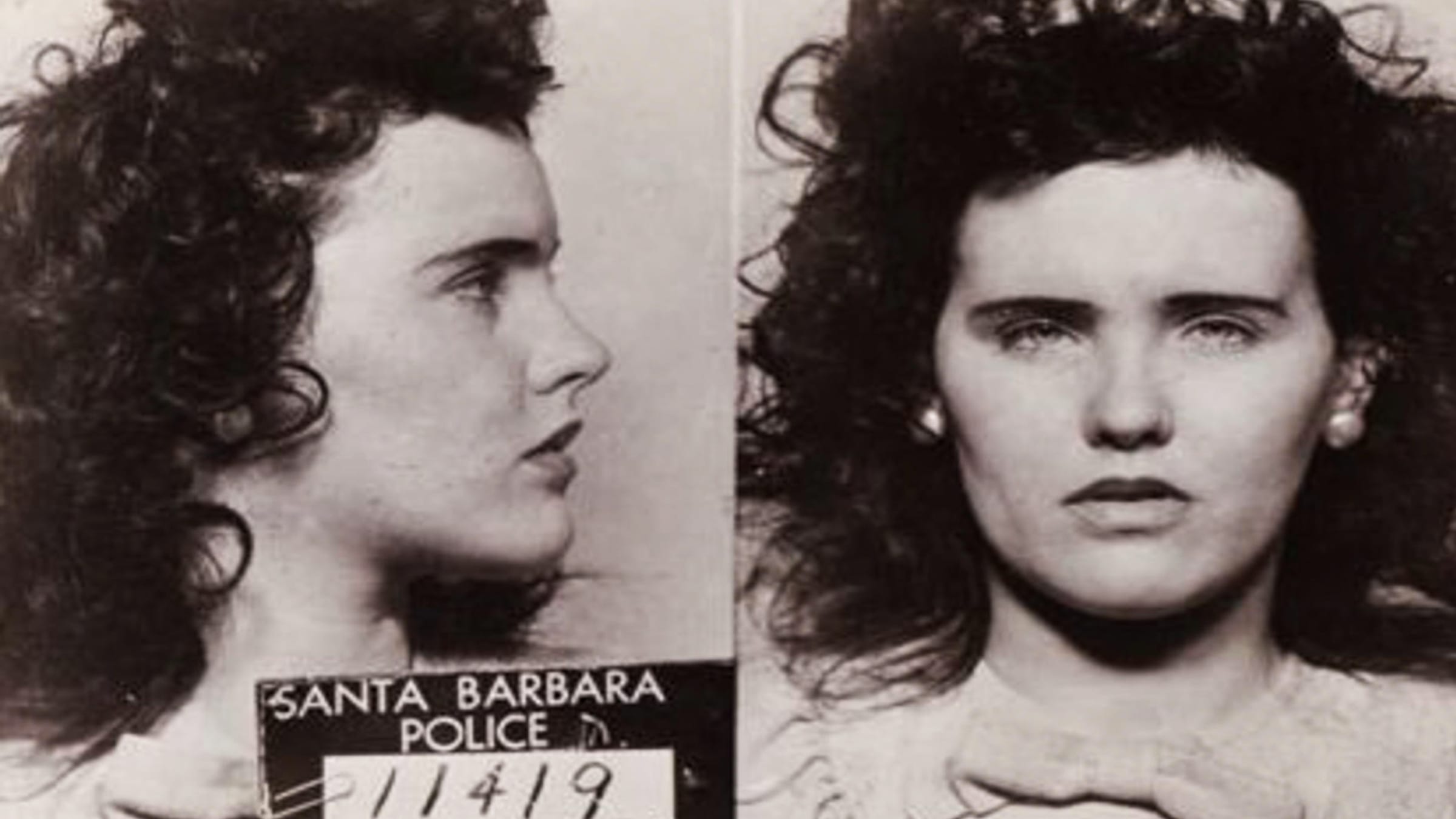Let’s dive straight into the chilling world of the Black Dahlia murder, where fascination meets horror. The infamous case of Elizabeth Short, also known as the Black Dahlia, has been a haunting mystery for decades. Her murder pictures have captivated the public, not just because of the grotesque nature of the crime but because of the unanswered questions that linger to this day. It’s a story that’s both tragic and mesmerizing, pulling you into its dark web of intrigue.
Imagine this: a young woman found brutally murdered, her body cut in half, and a haunting smile carved across her face. That’s the grim reality of the Black Dahlia case. The murder pictures that emerged after her death have become iconic, representing the darker side of humanity and the lengths to which evil can go. It’s a tale that refuses to be forgotten, and for good reason.
Now, you might be wondering why this case still holds such fascination after all these years. Well, it’s not just about the gruesome details. It’s about the mystery, the unanswered questions, and the way it reflects the darker corners of society. Let’s explore this haunting story further and uncover what makes the Black Dahlia murder pictures so compelling.
Read also:Nancy Corinne Pelosi The Powerhouse Politician Shaping Americas Future
Table of Contents
- Biography of Elizabeth Short
- Murder Details and Pictures
- The Mystery Surrounding the Black Dahlia
- Media Coverage and Public Fascination
- Psychology of the Crime
- Art and Literature Inspired by the Case
- Conspiracy Theories
- Forensic Advances
- Legacy and Cultural Impact
- Conclusion and Final Thoughts
Biography of Elizabeth Short
Early Life and Background
Elizabeth Short, better known as the Black Dahlia, was born on July 29, 1924, in Boston, Massachusetts. Growing up in a modest family, Elizabeth faced her fair share of challenges. Her father, Cleo Short, abandoned the family when she was a child, leaving her mother, Phoebe Mae, to raise five daughters alone. Despite these hardships, Elizabeth was described as a charming and outgoing young woman.
Here’s a quick glimpse of her early life:
- Born in Boston, Massachusetts
- Grew up in Medford, Massachusetts
- Attended Medford High School but dropped out
- Moved to Florida during World War II
Data and Facts About Elizabeth Short
| Full Name | Elizabeth Short |
|---|---|
| Birthdate | July 29, 1924 |
| Place of Birth | Boston, Massachusetts |
| Occupation | Aspiring actress |
| Death Date | January 15, 1947 (discovered) |
Murder Details and Pictures
On January 15, 1947, the body of Elizabeth Short was discovered in a vacant lot in the Leimert Park neighborhood of Los Angeles. The scene was chilling: her body was severed at the waist, and her face bore a ghastly "Glasgow smile," a cut that stretched from ear to ear. The murder pictures that followed were both haunting and unforgettable, capturing the brutal reality of her death.
Here are some key details about the crime:
- Body found in a vacant lot in Leimert Park
- Severed at the waist
- Famous "Glasgow smile" carved into her face
- No fingerprints or DNA evidence left behind
The Mystery Surrounding the Black Dahlia
The Black Dahlia murder remains one of the most infamous unsolved cases in American history. Despite numerous investigations and countless theories, the killer has never been identified. The lack of concrete evidence and the bizarre nature of the crime have only added to the mystery.
Why Is the Case Unsolved?
There are several reasons why the Black Dahlia case remains unsolved:
Read also:Brigitte Macron Wedding Dress The Story Behind The Iconic Look
- Limited forensic technology at the time
- No clear motive or suspect
- Overwhelming number of false confessions
- Media frenzy that complicated the investigation
Media Coverage and Public Fascination
The Black Dahlia murder captured the public’s imagination like few other crimes. Newspapers across the country ran stories about the case, and the term "Black Dahlia" was coined by reporters inspired by a popular film noir movie of the time. The media coverage was intense, and the murder pictures were splashed across headlines, fueling public fascination.
Why Did the Public Become So Obsessed?
There’s something about the Black Dahlia case that strikes a chord with people. Maybe it’s the brutal nature of the crime, or maybe it’s the idea that such a young and beautiful woman could be taken so cruelly. Whatever the reason, the public’s obsession with the case has endured for decades.
Psychology of the Crime
Understanding the psychology behind the Black Dahlia murder is no easy task. Experts have speculated about the type of person who could commit such a heinous act, but without concrete evidence, it remains speculation. What we do know is that the killer was methodical and calculating, leaving behind a crime scene that was almost staged.
What Can We Learn from the Crime Scene?
The crime scene itself tells a story. The way Elizabeth’s body was posed, the precision of the cuts, and the lack of defensive wounds all point to a killer who was in control. It’s a chilling reminder of the darkness that lurks within some individuals.
Art and Literature Inspired by the Case
The Black Dahlia murder has inspired countless works of art and literature. From books to movies, the case has been retold and reimagined in various forms. One of the most notable works is James Ellroy’s novel "The Black Dahlia," which fictionalizes the events surrounding the murder.
Notable Works Inspired by the Case
- James Ellroy’s "The Black Dahlia"
- Brian De Palma’s film adaptation of the same name
- Various paintings and sculptures
Conspiracy Theories
No unsolved case is without its fair share of conspiracy theories, and the Black Dahlia murder is no exception. Over the years, numerous theories have emerged, ranging from the plausible to the outright bizarre. Some suggest that Elizabeth was involved in the seedy underbelly of Hollywood, while others believe she was the victim of a serial killer.
Do Any Theories Hold Water?
While many theories are intriguing, very few have any basis in fact. The lack of evidence makes it difficult to pin down any one theory as the truth. Still, the speculation continues, adding to the mystique of the case.
Forensic Advances
Advances in forensic technology have shed new light on the Black Dahlia murder. DNA testing and digital analysis have allowed investigators to revisit the case with fresh eyes. While these advances haven’t led to an arrest, they have provided valuable insights into the crime.
What Have We Learned from Modern Forensics?
Modern forensics has revealed that the killer was likely someone who knew what they were doing. The precision of the cuts and the lack of DNA evidence suggest a level of expertise that is both unsettling and fascinating.
Legacy and Cultural Impact
The legacy of the Black Dahlia murder extends far beyond the crime itself. It has become a symbol of the darker side of human nature, a reminder of the unsolved mysteries that haunt us. The case continues to inspire new generations of writers, artists, and investigators, ensuring that Elizabeth Short’s story will never be forgotten.
How Has the Case Impacted Society?
The Black Dahlia murder has had a profound impact on society. It has raised questions about the treatment of women, the role of the media in crime, and the importance of solving unsolved cases. It’s a case that challenges us to confront the darker aspects of our world.
Conclusion and Final Thoughts
The Black Dahlia murder is a case that continues to captivate and haunt us. From the chilling murder pictures to the unanswered questions, it’s a story that refuses to be forgotten. While the killer may never be caught, the case serves as a reminder of the importance of justice and the pursuit of truth.
So, what can we take away from this harrowing tale? First and foremost, it’s a reminder of the resilience of the human spirit. Despite the darkness that surrounds us, we continue to seek answers and strive for a better world. And secondly, it’s a call to action. We must continue to push for justice, not just for Elizabeth Short, but for all victims of crime.
So, take a moment to reflect on the Black Dahlia murder and what it means to you. Share this article with others, and let’s keep the conversation going. Together, we can ensure that Elizabeth Short’s story is never forgotten.
References:
- Los Angeles Times
- True Crime Magazine
- James Ellroy’s "The Black Dahlia"


:max_bytes(150000):strip_icc():focal(749x384:751x386)/black-dahlia-011024-tout-c5912f4b70ad4b34a19f54550116a1b3.jpg)
